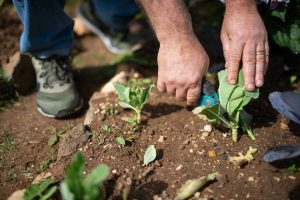Cooking with Nuts and Seeds for Extra Nutrition
Whether you’re a seasoned chef or a novice in the kitchen, you’ve probably heard of the nutritional benefits of incorporating nuts and seeds into your diet. These tiny powerhouses are not only packed with essential vitamins and minerals, but they also add a crunchy texture and delicious flavor to any dish. In this article, we’ll delve deeper into the world of cooking with nuts and seeds, and explore how you can maximize their nutritional value in your meals. So grab your apron and let’s get cooking!
The Importance of Nuts and Seeds in Our Diet
Nuts and seeds are an integral part of a healthy diet as they offer a wide range of health benefits. They are an excellent source of plant-based protein, making them an ideal food for vegetarians and vegans. They also contain healthy fats, such as omega-3 fatty acids, which can improve heart health. Additionally, nuts and seeds are rich in fiber, vitamins, and minerals, making them a great addition to any dish. So why not incorporate them into your cooking and take your meals to the next level in terms of nutrition?
How to Choose the Right Nuts and Seeds
When it comes to cooking with nuts and seeds, there are endless options to choose from. However, not all nuts and seeds are created equal, and some may offer more nutritional benefits than others. Here are a few factors to consider when selecting nuts and seeds for your meals:
1. Go for Unsalted and Unroasted Varieties
Avoid nuts and seeds that are coated in salt or roasted in oil, as these add unnecessary sodium and unhealthy fats to your dish. Opt for raw or unsalted varieties to reap the maximum health benefits of nuts and seeds.
2. Mix It Up
Don’t limit yourself to a single type of nut or seed. Mix things up and try a variety of options, such as walnuts, almonds, cashews, pumpkin seeds, and sunflower seeds. Each type offers a unique flavor and nutritional profile, adding depth and diversity to your dish.
3. Consider Seasonality
While most nuts and seeds are available year-round, some have a specific season when they are at their freshest and most flavorful. For instance, almonds are usually harvested in mid-summer, while hazelnuts are best in fall. Plan your meals accordingly by incorporating seasonal nuts and seeds to get the most out of them.
Cooking with Nuts and Seeds
Nuts and seeds can enhance the flavor and texture of any dish. Here are some creative ways to incorporate them into your cooking:
1. Toast and Sprinkle on Salads
Give your salads a nutritious boost by toasting a handful of mixed nuts and seeds and sprinkling them on top. Not only will it add a crunchy element to your salad, but it will also provide a healthy mix of fats, protein, and fiber.
2. Add Them to Your Smoothie
You may not think of adding nuts and seeds to your smoothie, but they can add a creamy texture and a dose of nutrition. Try a nut butter, such as almond or cashew, or sprinkle some chia seeds or flaxseeds into your smoothie for extra fiber and healthy fats.
3. Make a Homemade Trail Mix
Create a healthy and delicious snack by combining your favorite nuts and seeds in a homemade trail mix. Mix them with dried fruits, such as raisins or cranberries, for a touch of sweetness, or add a dash of cinnamon for extra flavor.
4. Use Them as a Topping
Nuts and seeds make a great topping for various dishes, such as oatmeal, yogurt, or even ice cream. You can also add them to your morning toast spread with nut butter or sprinkle them on top of a stir-fry for a nutritious crunch factor.
Tips for Storing Nuts and Seeds
To ensure that your nuts and seeds remain fresh and retain their nutritional value, here are a few storage tips:
1. Keep Them in an Airtight Container
To prevent your nuts and seeds from going rancid, store them in an airtight container in a cool, dark place. Alternatively, you can keep them in the fridge or freezer for a longer shelf life.
2. Keep Them Away from Heat and Light
Heat and light can cause nuts and seeds to spoil quickly. So, make sure to store them in a dark and cool place away from direct sunlight, heat from the stove, or the oven.
3. Ground Nuts and Seeds Last Longer
If you’re not planning to use all your nuts and seeds at once, consider grinding them into a meal or flour. This will help them last longer and can be easily incorporated into various dishes.
Cooking with nuts and seeds is a great way to boost the nutritional value of your meals. With their versatility and health benefits, they are a must-have ingredient in any kitchen. So next time you’re in the mood for some cooking, don’t forget to reach for those nuts and seeds and take your dishes to the next level in terms of nutrition. Your body will thank you for it!











